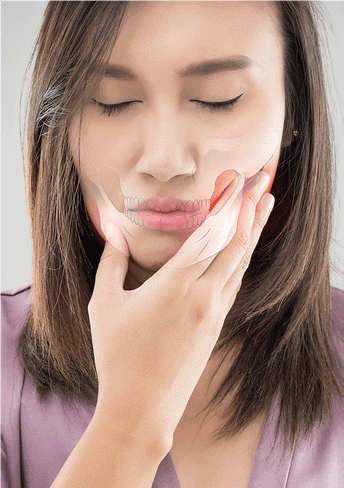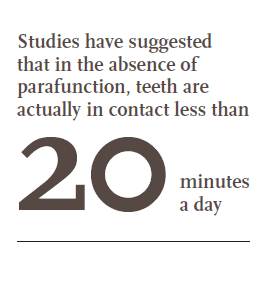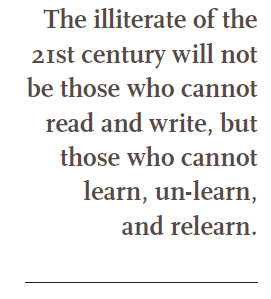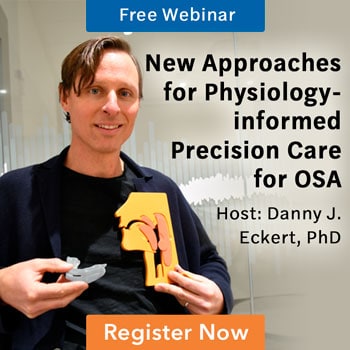by Barry Glassman, DMD, and Don Malizia, DDS
Dentistry’s Empirical History
Restorative dentistry has built institutions based on empirical evidence. Unfortunately, scientific evidence has not been an essential element of dentistry’s history. Without an understanding that empiricism is a theory based in the role of experience and observation in “evidence,” dentistry creates a curriculum devoid of randomized controlled studies. Dental students are not required to read and digest current literature, and are not taught the principles of evidenced based medicine.
Dental sleep medicine is the combination of medical sleep principles and dentistry. Dentistry’s empirical evidence is often then cemented in the dental sleep medicine education by confirmation bias. Confirmation bias is defined as “the seeking or interpreting of evidence in ways that are partial to existing belief, expectations, or a hypothesis at hand.” Frequently, an association based on chronology is noted between a potential “cause” and “effect” and a mechanism is imagined that explains what has been observed. Over time the principals at play then become “truth” and taught as fact.
While there are many such examples, let’s examine the following commonly taught “facts.”
- Bruxism is caused by occlusal interferences and other forms of malocclusion
- Bruxism causes joint and muscle pain
- Bruxism is a protective mechanism caused by sleep apnea. Therefore, if the patient’s sleep apnea is properly managed, bruxism will be eliminated.
Odontogenic Dental Expectations – An explanation of dentistry’s vulnerability to confirmation bias
Ralph Waldo Emerson explained man’s desire to look for direct causal relationships when he wrote the following in 1904:
“And as mind, our mind or mind like ours, reappears to us in our study of Nature, Nature being everywhere formed after a method which we can well understand, and all the parts, to the most remote, allied or explicable,—therefore our own organization is a perpetual key, and a well-ordered mind brings to the study of every new fact or class of facts a certain divination of that which it shall find. This reduction to a few laws, to one law, is not a choice of the individual, it is the tyrannical instinct of the mind.”1
The diseases of dentistry are largely understood by modern science. We know what factors are involved with periodontal disease, and we understand decay. When patients are presented with treatment plans, rarely is “prognosis” even considered or discussed. It is quite clear that if the patients play the limited role that is required of them, and if our treatment is well delivered, the treatment plan will be successful. If there are difficulties during the treatment process, both the dentist and the patient tend to attempt to determine where the “fault” lies. As a result, we expect to understand mechanisms of disease, we expect that all the disease processes are understood, and we feel responsible to cure our patients of those diseases and create ideal dental health.
When there are no exact explanations or when science seems incomplete, our medical colleagues accept the reality that the cause of every migraine, cold, or cancer, for example, is not known. Nor do they assume they can predictably prevent and/or cure these maladies.
Patients who received quality dental care from quality dentists die with their teeth. Patients who receive quality medical care from quality physicians…still die. Therefore, when considering odontogenic matters, dentistry is unduly burdened by the expectation of perfection and success. This burden may in fact be largely responsible for dental burnout and consummate dissatisfaction within the profession.
The Move from Odontogenic Dentistry
Over the years, dentistry has transitioned from attempting to separate the teeth and the supporting structures from the rest of the body to understanding that there are in fact very intricate relationships between these dental structures and the other components of the cranial-cervicomandibular system. These relationships have led to an increased dental role in orofacial pain, headaches, and cervical pain, chronic pain issues and sleep disorders.
It is not surprising that both function and dysfunction of these complicated systems are not quite as “finite” as the anatomy and physiology of the teeth and the periodontium. Unfortunately, dentistry tended to take the model of relative simplicity in terms of function and dysfunction involved in their odontogenic world into their understanding of these non-odontogenic structures. Campbell made this observation in 1957:
“Time passed and it slowly dawned upon us that the problem of facial pain was bigger than we had thought, and that it could not be completely explained in terms of mechanics. Dentists have every reason to believe in their mechanical arts. They have developed a system of oral engineering of which they can be justly proud. However, their concentration on the restorative aspects of their profession has, to some extent, blinded them to the wide implications of pain. When he suffers pain, the patient embodies all the complexity, the nobility, and the frailty of humanity, so that the compassion and the precision of the dentist is incomplete without a knowledge of biologic and psychogenic values.”2
The Issue of “Causality”
 A simple Google search will reveal the bacteria responsible for periodontal disease. We are aware how responsive a patient will be to significantly improved homecare and therefore simple gingivitis and gingival hyperplasia will respond predictably to home care improvements in combination with professional prophylaxis. We are thus comfortable stating that periodontal disease is caused by poor home care. In the same vein, we are also comfortable and accurate in stating the “cause” of dental decay, and we are aware that a combination of increasing the patient’s adaptive capacity to decay with fluoride in addition to good home care will essentially resolve the decay process.
A simple Google search will reveal the bacteria responsible for periodontal disease. We are aware how responsive a patient will be to significantly improved homecare and therefore simple gingivitis and gingival hyperplasia will respond predictably to home care improvements in combination with professional prophylaxis. We are thus comfortable stating that periodontal disease is caused by poor home care. In the same vein, we are also comfortable and accurate in stating the “cause” of dental decay, and we are aware that a combination of increasing the patient’s adaptive capacity to decay with fluoride in addition to good home care will essentially resolve the decay process.
Al Fonder coined the term “Dental Distress System” (DDS) when in 1961 he related dental structure in terms of posture of the mandible and the upper cervical spine to altered disorders of nerve root compression and more. This structural concept suggests that when the malocclusions and altered jaw positions are improved, symptoms resolve, thus proving that the altered structure was the “cause” of the symptoms:
“DDS patients complain of headache, dizziness, hearing loss, depression, worrying, nervousness, forgetfulness, suicidal tendencies, insomnia, sinusitis, fatigue, indigestion, constipation, ulcers, dermatitis, allergies, frequent urination, kidney and bladder complications, cold hands and feet, body pains and numbness and a host of sexual failures and gynecological problems. Elimination of the DDS reverses these chronic problems, the body chemistry and blood picture normalize. Even backward students when treated rapidly advance in classroom productivity often becoming honor students.”3 It was further suggested that DDS caused Parkinson’s disease and epilepsy.4
An internationally known physician named A. B. Leeds who treated Roosevelt, Eisenhower, and Stalin, who worked with the late dentist Willie B. May said “When this treatment is fully researched and understood, it will be capable of revising every diagnosis, treatment procedure and prognosis in the medical world.”5 Is it any wonder, then, that without evidenced based principles at work, empirical evidence suggesting causality continued to dominate the non-odontogenic world of dentistry?
This History of Bruxism, Pain, and Occlusion; Empirical Evidence Reigns
The role of occlusion in pain can be traced from Fonder to Costen, Guichet, Gelb, Dawson and Jankelson and to the rise of the “TMJ camps,” suggesting a causal relationship between occlusion and joint position to pain and dysfunction. Each of these pioneers suggested a causal relationship between occlusion, jaw position and pain. While there was disagreement on what was “normal,” there was the general agreement of a causal relationship between their definition of “abnormal” and pain or dysfunction.
Interestingly, all of these “camps” reported some success with patients with the same various signs and symptoms. Of course, the assumption was being made that when the jaw position was changed and resulted in a symptomatic improvement, the symptoms were therefore caused by the “improper” jaw position. And as in the past, causation was assumed and statements of causality were again made between structure and headache, jaw pain, and more.
Evidenced-based scientific principles were ignored and anecdotal reporting with assumptions of mechanism reigned. Confirmation bias underlying all of the techniques resulted in each jaw position, no matter how different, being claimed to be responsible for overwhelming successful symptomatic resolution including everything from headaches to internal derangements of the temporomandibular joint.
The kneejerk reaction that opposes this thought process suggests that occlusion is not at all related to orofacial pain patterns. This concept is problematic for the general dental population who have personally witnessed many occasions of both odontogenic and nonodontogenic pain relieved with simple occlusal adjustments. The nature of causality thus becomes critically important and needs to be examined carefully.
Evidenced Based Medicine: The Good, the Bad, and the Ugly
As noted, the earlier paradigm of “science” relied on the collection of empirical evidence. Today, science requires “a systematic assembly of all available evidence followed by a critical appraisal of this evidence.” The old paradigm “has been based on history taking and clinical examination followed by treatment of symptoms; based on the accepted pathophysiology of the condition diagnosed at the relevant time.”6
An evaluation of the history of one form of orthopedic surgery is relevant. For many years an accepted treatment for osteoarthritis of the knee was arthroscopy, based on the accepted concept of the pathophysiology. Orthopedic surgeons had empirical evidence (uncontrolled cases series) that knee arthroscopy was successful. There was empirical evidence (observation) that demonstrated successful response to the arthroscopic surgery.
A well-designed random controlled study using arthroscopic surgery, arthroscopic lavage, and sham surgery resulted in finding absolutely no efficacy of arthroscopic debridement or lavage versus sham surgery.7
Karl Popper is credited with providing a solution to the question of “What is evidence?” Popper proposed the idea of falsifiability. “He pointed out that observations/empirical evidence cannot be used to prove laws but can falsify them. In order to turn empirical evidence into scientific evidence one has to “set up a null hypothesis and then try to refute it.”
Clearly, then, the use of Evidenced Based Medicine can be considered “good” as it helps us defeat our need to simplify causal relationships and helps us prevent confirmation bias from playing an inappropriate role in our risk benefit decision making. But misunderstanding Evidenced Based Medicine can be “Bad and Ugly” as well.
David Sackett is often credited as being the “Father” of Evidenced Based Medicine as a result of his publication in 2000.8 Donoff pointed out the fallacy of trying to support any procedure with the observations from one’s clinical practice in the face of evidence from random controlled clinical trials that are answering the question expressed as a null hypothesis.9
Unfortunately, Sackett is often misunderstood and interpreted to suggest that ALL treatment considerations must be a result of randomized controlled trials. This concept is not only used by those who have the knee jerk reaction previously referred to, but also by insurance companies who seek to deny therapy based on its “experimental basis.” Sackett makes it very clear that decision making in the clinical practice needs to be based on an appropriate combination of science AND clinical experience.
TMD and Occlusion
 The use of “TMD” in any discussion is problematic.10 “TMD” is an umbrella “diagnosis” that is not specific and includes a host of disparate conditions. The predominance of the evidence suggests no direct causal relationship between any specific pain pattern and any specific scheme of tooth-to-tooth contact. Yet, as dentists, we are well aware that changes in occlusion have resulted in either initiation of pain or resolution of pain pre and post restorative therapy.
The use of “TMD” in any discussion is problematic.10 “TMD” is an umbrella “diagnosis” that is not specific and includes a host of disparate conditions. The predominance of the evidence suggests no direct causal relationship between any specific pain pattern and any specific scheme of tooth-to-tooth contact. Yet, as dentists, we are well aware that changes in occlusion have resulted in either initiation of pain or resolution of pain pre and post restorative therapy.
Occlusion is a “noun” and in dental terminology refers to the relationship of the dental scheme when the elevators contract and bring the teeth into contact in maximum intercuspation. Occluding is a “verb” and refers to the action of dental contact. It would seem obvious, then, that “occluding” and the consequential forces that result are at issue when it comes to possible damage to the components of the cranial-cervicomandibular complex. Despite the fact that dentistry tends to “stipulate” occlusion, the fact remains that studies have suggested that in the absence of parafunction, teeth are actually in contact less than 20 minutes a day.11
Is Bruxism Caused by Malocclusion?
It has been generally thought by most of dentistry that bruxism causes internal derangements and orofacial pain as well as headaches. In 1961 Ramfjord and Ash concluded with poor scientific method and no control group, that bruxism was caused by “interferences” and thus malocclusion.12
Dr. Dawson’s teachings were clearly geared towards putting the condyle in centric relation and eliminating all interferences to that position. When this type of equilibration had been completed and the patient’s symptoms had improved, it was then assumed that the bruxism had caused the pain and that the equilibration had stopped the bruxism.13
The suggestion that equilibration stopped the bruxism has never been proven. In fact, Goodman and Greene demonstrated that “mock equilibrations” were as effective in symptom reduction as fully performed equilibrations.14 Michelotti demonstrated that when she added interferences (gold foil) into the occlusal scheme of healthy females, not only did it not produce symptoms, but masseter EMG levels decreased.15
Is Bruxism a Protective Mechanism for Sleep Disturbed Breathing?
 In 2008 Jerald H. Simmons, MD, and Ronald S. Prehn, DDS, presented a poster at a respiratory meeting that was later published. The poster was entitled “Nocturnal Bruxism as a Protective Mechanism Against Obstructive Breathing During Sleep.”16
In 2008 Jerald H. Simmons, MD, and Ronald S. Prehn, DDS, presented a poster at a respiratory meeting that was later published. The poster was entitled “Nocturnal Bruxism as a Protective Mechanism Against Obstructive Breathing During Sleep.”16
This was a retrospective review of 729 consecutive patients with “clinically significant obstructive breathing during sleep.” Patients were placed in the “Bruxism Group” by responding positively to sleep questionnaires that asked about the awareness of nocturnal bruxism or waking up with “aching jaw pain.” The patients were contacted and questioned following successful resolution of the breathing disorder with CPAP therapy. The following was their conclusion:
“We postulate that nocturnal Bruxism is a compensatory mechanism of the upper airway to help overcome upper airway obstruction by activation of the clenching muscles which results in bringing the mandible, and therefore the tongue, forward. … After treating the airway with CPAP this protective mechanism is no longer needed and over time the Bruxism resolves. This study suggests such a compensatory mechanism is the etiological force behind nocturnal Bruxism in many patients.”16
Patient’s accurate awareness of their own nocturnal bruxism is well documented, as is the lack of relationship between bed partners’ reports and jaw discomfort.17 Maluly demonstrated the lack of consistency between reported bruxism on “validated questionnaires” and bruxism in a large sample evaluated with EMG’s during polysomnograms.18
Additional support for the concept of bruxism being “caused” by the presence of apnea and thus being a “protective mechanism” has been cited in the work of Kato who reported the tendency of two high amplitude breaths to occur immediately prior to the respiratory gasp associated with the sympathetic burst in the recovery of an obstructive episode.19 This has been interpreted to suggest that the patient is obstructed and trying to breath prior to the respiratory gasp. This transient sympathetic activity is often also associated with bruxism. While this may seem to be “logical,” an evaluation of the study population reveals that those patients with “sleep disorders” were excluded from the study. The authors further go on to point out that although it has been reported patients with sleep disordered breathing have a higher risk of reporting tooth grinding, the literature shows a weak correlation between the index of the respiratory disorder and the presence of sleep bruxism.
Saito et al. report a weak association between bruxism and SDB in a study of 59 patients with polysomnograms.20
A discussion about causation and potential contributing mechanisms becomes essential and takes us back to both Emerson’s and Campbell’s quotes at the beginning of this paper. Emerson was suggesting that man’s tendency was to attempt to simplify cause and effect. Campbell’s quote made it clear that understanding pain in not simple. Pain is a combination of not only the degree of negative stimulus to the organism but includes a complex physiology that is not totally understood and cannot be simply measured. Pain is not directly related to the painful event but is a complex concept with many compounding not readily measured or always understood factors.
Every dentist has adjusted an occlusion and noted a change in a patient’s dental and often non-dental symptoms. Success. Every dentist has then repeated that adjustment for another patient, only to be surprised by a total lack of response. Failure!
The Bradford Hill criteria have been accepted as necessary to determine a causal relationship between a presumed cause and an observed effect.21 Without a biological gradient (dose response curve) demonstrated it appears that there is no causal relationship between bruxism and pain, and yet it would be certainly incorrect to suggest that altering the forces during the bruxism event in terms of magnitude and direction by changing the occlusal scheme can’t result in altered symptoms.
Raphael has demonstrated that people with pain do not necessarily brux more than people without pain. She goes further to suggest that there are those with pain who don’t brux, and those who brux and don’t have pain. In fact, there are those who brux significantly in terms of frequency and duration and do not have any pain or dysfunction.22
It therefore follows that it would be incorrect to suggest that when occlusion is altered, and the symptoms resolve that the occlusal scheme and bruxism were the “cause” of the pain pattern. It would be more appropriate and accurate to suggest that the occlusal scheme and bruxism was certainly a contributing factor, and that the alteration of that scheme with that particular patient’s adaptive capacity considered, helped resolve their pain or dysfunction.
It is misguided, therefore, to suggest that the lack of a causal relationship between bruxism and pain would suggest that treatment aimed at parafunctional control and thus altering the forces of bruxism is “misguided.”
It is equally misguided to use logic in the absence of science to suggest that bruxism is a protective mechanism and is causally related to apnea. A more careful evaluation of the science makes the observation that, as anticipated, the cause and effect pattern is not direct nor as simple as proposed. In another study with polysomnograms, Kato et al report “in patients with obstructive sleep apnea syndrome, the contractions of the masseter and anterior temporalis muscles after respiratory events can be nonspecific motor phenomena, dependent on the duration of the arousals rather than the occurrence of respiratory events.23 It becomes clear that initiation of muscle contraction leading to nocturnal bruxism is related to arousals, whether they be respiratory related arousals (RERA’s) or non-respiratory related arousals. It would follow then that it would be possible therefore to reduce nocturnal bruxism events by management of a patient’s sleep disturbed breathing. That does not make the relationship a direct one, and thus the assumption of a “protective mechanism” should be more carefully considered.
The Future of Dentistry: The Role of Science
This is an exciting time for dentistry. As Campbell noted in 1957, “Dentists have every reason to believe in their mechanical arts. They have developed a system of oral engineering of which they can be justly proud.”2
Dentistry now plays a significant role in management of orofacial pain, joint dysfunction and sleep disorders. Dentistry cannot be held back because of its empirically based past. It must change its model to allow growth and learning.
Dentistry cannot continue to accept the role of confirmation bias. It cannot feel threatened by accepting that the mechanisms once assumed as “fact” may not be correct, and that what has been observed may indeed be accurate, but the assumptions of mechanism may not have been. We must accept that causal relationships are RARELY direct, and that this complex being for whom we have accepted some level of responsibility to help in some ways is more complex than the simple relationships we long to seek.
Alvin Toffler summarized this crossroads when he wrote, “The illiterate of the 21st century will not be those who cannot read and write, but those who cannot learn, unlearn, and relearn.




